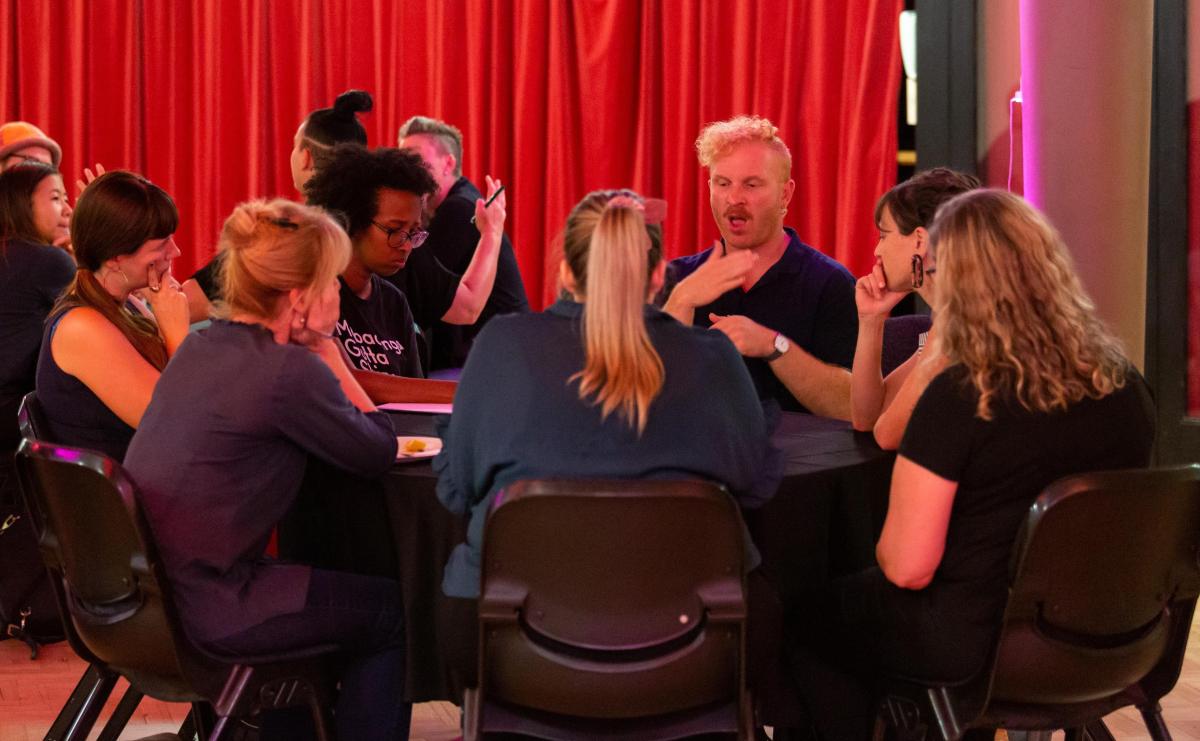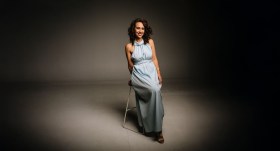Arts House launched 2021 not with a program, but an expansive Disability and Inclusion Action Plan (DIAP). It was the result of more than 18 months solid work between the Arts House team, partners Arts Access Victoria, and a group of leading arts practitioners. In this article, we’d like to share the steps we took to create a DIAP that is owned by many, creates space to learn, and champions artists with disabilities across all that we do.
HOW TO BEGIN?
The DIAP conversation began in a few places. The Arts House team worked internally, across departments, to identify a range of steps each team could take. Some things could be actioned immediately, such as a site and building access audit, creating an additional entrance to our building without steps, or putting access on the agenda of all team meetings. Other changes were ambitious and required more time and consideration from more people. This workshop produced an early draft series of actions.
Simultaneously a consultation relationship developed between Arts House and Janice Florence, Access Development Officer for Arts Access Victoria (AAV), and established choreographer and Artistic Director of Weave Movement Theatre.
Thirdly, Producer Sarah Rowbottam participated in Arts Disability Action Plan Training (ADAPT), presented by Arts Access Victoria. This training enabled participants to strengthen and embed disability inclusion and access across an organization, and support the arts and cultural sector in building its capacity to achieve equality for people with disability, lived experience of mental health, and/or who are Deaf.
NOTHING ABOUT US WITHOUT US
AAV supports arts organisations in their strategic plans to achieve equity of access. AAV advocate for the importance of consultation in the creation of a Disability Action Plan to determine the wishes of the people; such plans are aimed at “nothing about us without us.”
Arts House was highly aware of this need, and Janice was invited to help assemble an Advisory Group. In bringing the Advisory Group together, Janice and Arts House team drew on a mixture of Deaf and disabled artists who had already been associated with Arts House and new relationships. Our aim was to assemble a group which represented a range of access needs. This was a group of adventurous artists who are articulate and who have thought deeply about the barriers faced by Deaf, Disabled and neuro-diverse people at all levels of the arts. The group represented accomplished academics, marketing expertise, media, consultancy and those with an arts practice in their own right. They were excited by this opportunity for direct exchange with Arts House and saw the potential particularly to open opportunities for Deaf, Disabled and neuro-diverse artists. The Advisory Group’s members are Fayen d’Evie, Kath Duncan, Tom Middleditch, Hannah Morphy-Walsh, Luke Duncan King and Leisa Prowd.
The creation of the Advisory Group, discussions about the DIAP and the planning of meetings were a joint process between Arts House staff, including the Artistic Director and General Manager, as well as Janice.
The Advisory Group met three times over five months to discuss the DIAP, using Zoom. This had its advantages, as some participants lived in regional Victoria. In general, 2020 saw a range of access advantages and new learnings through the use of Zoom, and the presentation of digital events. Barriers of inaccessible transport and buildings were removed. There were learnings about the use of Auslan Interpreters and captions on Zoom, and about neuro diverse access needs. Discussions on the main topics were lively and honest. There was respect among the group members for each other’s opinions and recognition of mutual experiences of barriers. This was a rich source for development of the DIAP and of access and inclusion in Arts House’s facilities and programs.
HAVING A GO: BLEED AS AN ACCESSIBLE DIGITAL FESTIVAL
Arts House’s major programming focus in 2020, BLEED, created an opportunity to expand the role of the Advisory Group, and experiment with many of the actions identified in the DIAP. Arts House offers access consultations as part of all artists’ creative developments. These become opportunities for staff and artists to identify needs as the projects come together, consider aesthetic access as part of the works, and find effective service provisions for as many projects as possible. For BLEED, Claudia Stevenson, Jessica Moody, Eva Sifis, Hanna Cormick, Jonathan Craig, Anna Molnar and Description Victoria’s Will McRostie were engaged to provide advice and expand possibilities for the five commissioned works in the festival, as well as talks and responsive artworks. Some examples of the adaptations and tools include:
- Live remote captioning for live events
- Closed captions for pre-recorded video events
- Live remote Auslan interpretation
- Pre-recorded audio description for video events
- A live tactile tour, delivered digitally
- Transcripts for video events
- Plain-text transcripts
Consultants were also engaged to provide feedback on works as they were presented, with improvements made in response. Many learnings were gained through this process and the Arts House team would be very happy to share these experiences directly with anyone considering access as part of digital programming. In the end, at least 20% of the overall budget of the BLEED program was dedicated to access and inclusion work. This useful benchmark was introduced by Kath Duncan as part of the formation of the DIAP and is now considered across Arts House’s planning.
WHERE TO NEXT?
Arts House are already starting to see significant transformation, and benefits, from the partnership with Arts Access Victoria and the expertise of our Advisory Group. The most recent call to artists, Makeshift Publics, saw 16% of applicants identify as Deaf, disabled and/or neurodiverse which was a strong increase from previous call-outs. We are proud to be now be working with five people (out of 18) in the Makeshift Publics overall artist group.
Across the work we have done together so far, we consistently see adaptations made for a few, result in better experiences for all.
There is a huge amount of work still be done, and we are learning all the time. Since launching the DIAP Arts House has received a range of useful feedback and we really hope this continues as we execute the many different parts of our DIAP. As Arts House we applaud and express deep gratitude to Arts Access Victoria for their leadership and guidance throughout this process, and beyond. We are also sincerely thankful to the independent practitioners who gave their time and energy in consulting on the plan. We are extremely proud of this work and its artistic potential, and would encourage anyone who would like to discuss this work further to get in touch!
Co-authored by Janice Florence from Arts Access Victoria and Emily Sexton with the Arts House team.




